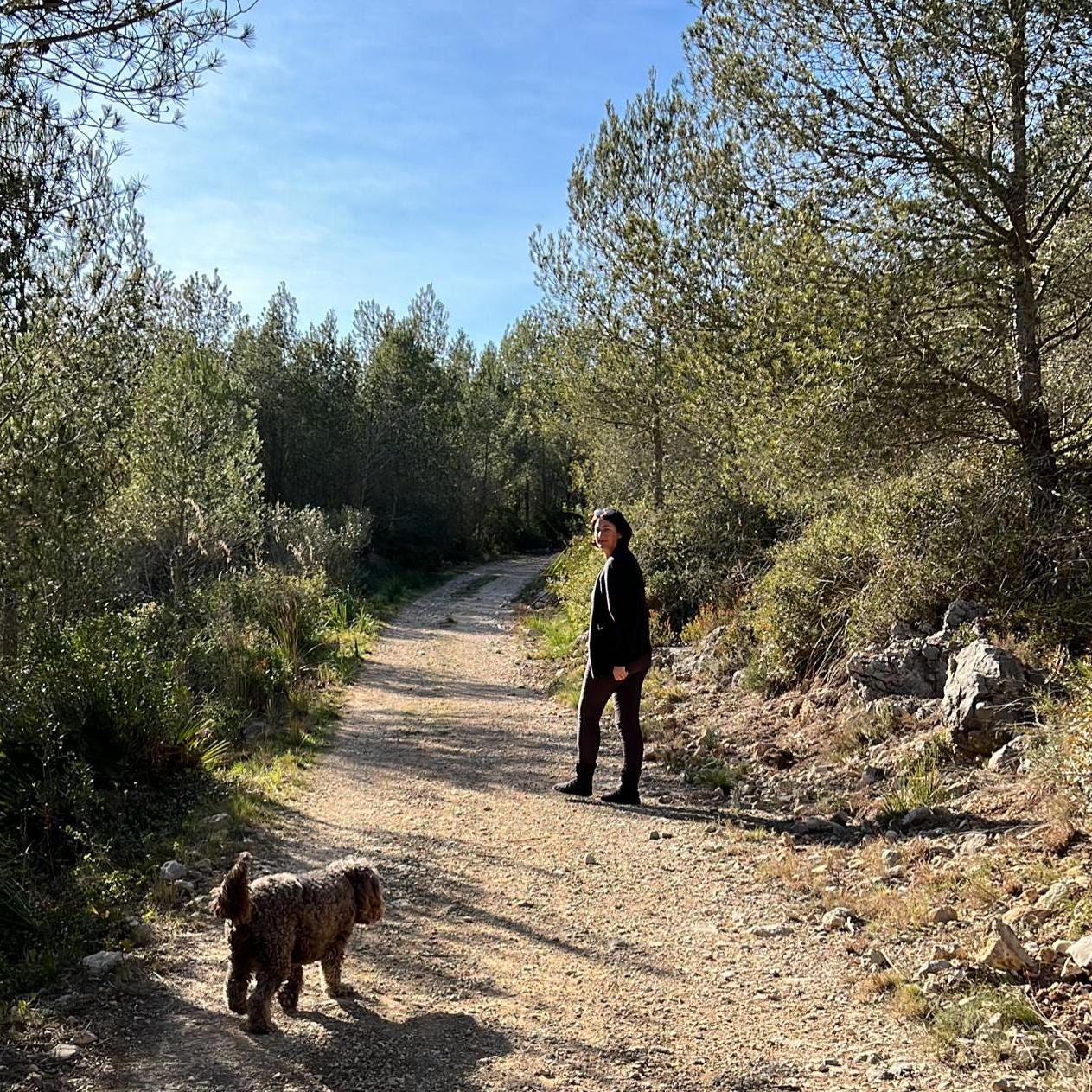Ey up. I’m Sarah Farley – a writer and walker born in Sydney, raised in Yorkshire, matured in the Caribbean and now living in That London.
By day I work as a copywriter, helping brands to find the right words for whatever they need to say. In my free time I love to write creatively – short stories, creative collaborations and even the occasional poem. The thing that connects these two types of writing is my love of walking.
Walking, writing and this newsletter
Walking is the place where ideas happen. So in my posts we’ll explore different types of walking – from walking alone, with others or with a dog, to discovering new places and rediscovering the ones you thought you knew well. We’ll then use the walking themes as a starting point for some simple and easy writing.
What you need
You don’t need to have trekked the Wainwright routes, bagged a few Munros or written a novel to join in. Just bring a notepad and pen, your imagination and the courage to put your best foot forward.
My walking and writing story
Walking
Some people are born to walk. They shove their feet into their hiking boots, slap a pack on their back and stride off into the great unknown.
Reader, I am not one of those people.
I was born with two club feet and achilles tendons so fragile they would tear like wet tissue paper. Despite the physiotherapy that eventually pointed my toes in the right direction, I spent the best part of my childhood limping in pain. Shoes were too heavy and throttled my feet, and it felt like socks could give me blisters. And when it came to PE at school you won’t be surprised to hear that I was always the last one picked for the team. Clearly, a life on the trails was not for me.
Or so I thought.
Over time my ankles and tendons got stronger, I limped less and the pain of walking disappeared. I basically grew and walked out of it, and by the time I was in my mid-twenties walking had become so effortless I took it for granted. It was a tool for getting me from home to work, from one pub to the next or from my flat to the supermarket. Sure, I’d grown into a person who enjoyed a long country stroll or amble along a beautiful stretch of coast, but I never thought of it as something that defined me.
Until my GP told me I should walk less.
At the start of 2020 I started limping again and by the summer I could only walk for 15 minutes before I was in agony. Only this time it wasn’t my club feet and dodgy tendons playing up: ‘Arthur Itis’1 had taken up residence in my toes. This was at the start of the pandemic and the UK lockdown when we were only allowed 30-minutes exercise a day. I thought I would lose my mind if I couldn’t walk, which helped me realise how important it was to me. Somewhere over the years, walking had become more than a practical way of getting from A to B. It helped keep me fit, calm my mind and feed my soul. And, importantly for me both professionally and personally, to spark my writing.
Once again physiotherapy came to the rescue along with an amazing podiatrist who helped me rethink my footwear and how I walk, and assured me that I’d be able to get back out there after a bit of hard work. Luckily, I’d caught the arthritis early enough to delay the need for expensive customised orthotics, steroid injections or – the last resort – surgery. After long, slow and painful months doing daily physio I could eventually walk 15 minutes without pain. Then 20 minutes and then 25. The day I walked for 30 minutes pain-free was both a relief and a joy. I felt like me again.
Along the way I stopped taking walking for granted and started making the most of every step I took. Whether that was meeting a friend for a short stroll in the park, taking care of an errand like posting a letter, or my regular walk to work where I leave my flat, walk around the block, and come back home to my desk.
It also helped me see how walking had been helping me in so many areas of my life. The walks to client offices helped me mentally prepare for meetings and the walks back helped me plan the writing I’d do for them. A walk in my local park could calm my mind if I was feeling anxious or stressed. A walk around the block could help me if I was feeling stuck with my writing. And whatever type of walk I was doing, I’d find myself reflecting on life, the world and what it all means, and the ideas would flood in. I finally admitted to myself that I am a walker.
So how does this all link to writing this newsletter?
Writing
The idea behind The Writer’s Walk began not on the page but on the path. It grew out of my treks in the Yorkshire Dales, street art strolls around Sydney, San Francisco, London and Athens, tramps along the trails in New Zealand, hillside hikes in Crete, day-long rambles in the New Forest and wanders along the Cornish, Jurassic and Yorkshire coastal paths. And the urge to bring walking and writing together in some way became even stronger through each painful step I took during the lockdowns. Because through all of these experiences walking had always been on my mind, in my heart and under my (blistered) feet.
I’m now learning how every walk we take can be an opportunity for reflection, creativity and as inspiration for writing. So over the course of these posts I’ll be sharing the different themes I’ve discovered through my walks and pairing each one with a simple writing prompt you can try for yourself.
A few steps and words a day can make a difference
You might think from all this walk talk that I’m an outdoor maven who takes long-distance solo hikes, camps out in extreme weathers and has completed notable challenges like the Camino de Santiago. I’m not! While I’d like to achieve some of those goals one day, I’m just a woman who can get as much from a 10-minute walk around a city block as I can from an afternoon of gentle strolling along a country path.
Both types of walking can restore, energise and inspire me, and spark my creativity and writing. And I’m sharing that here with you in the hope you’ll experience the same.
You don’t need to be much of a walker. Just 10 minutes a day is a good way to begin. And you don’t need to be a writer. Simply giving yourself 5 minutes to have a go is a good start.
Will you walk with me?
Sarah
PS – A note on photos, images and copyright
I personally took almost every photo and image that I use on The Writer’s Walk, so the copyright belongs to me, as does the copyright of my written work on here. But on the very rare occasions where I use images by other people I get their permission, credit them as the photographer, producer, artist or author of the work and, where possible, link to their website or social media profiles. If you’d ever like to use one of my images – which is doubtful as I’m not the best photographer in the world – please get in touch and ask me. I’ll very likely say yes, but will ask to be credited as the photographer and for a link to be included back to this site. Thanks!
My mum’s name for arthritis



